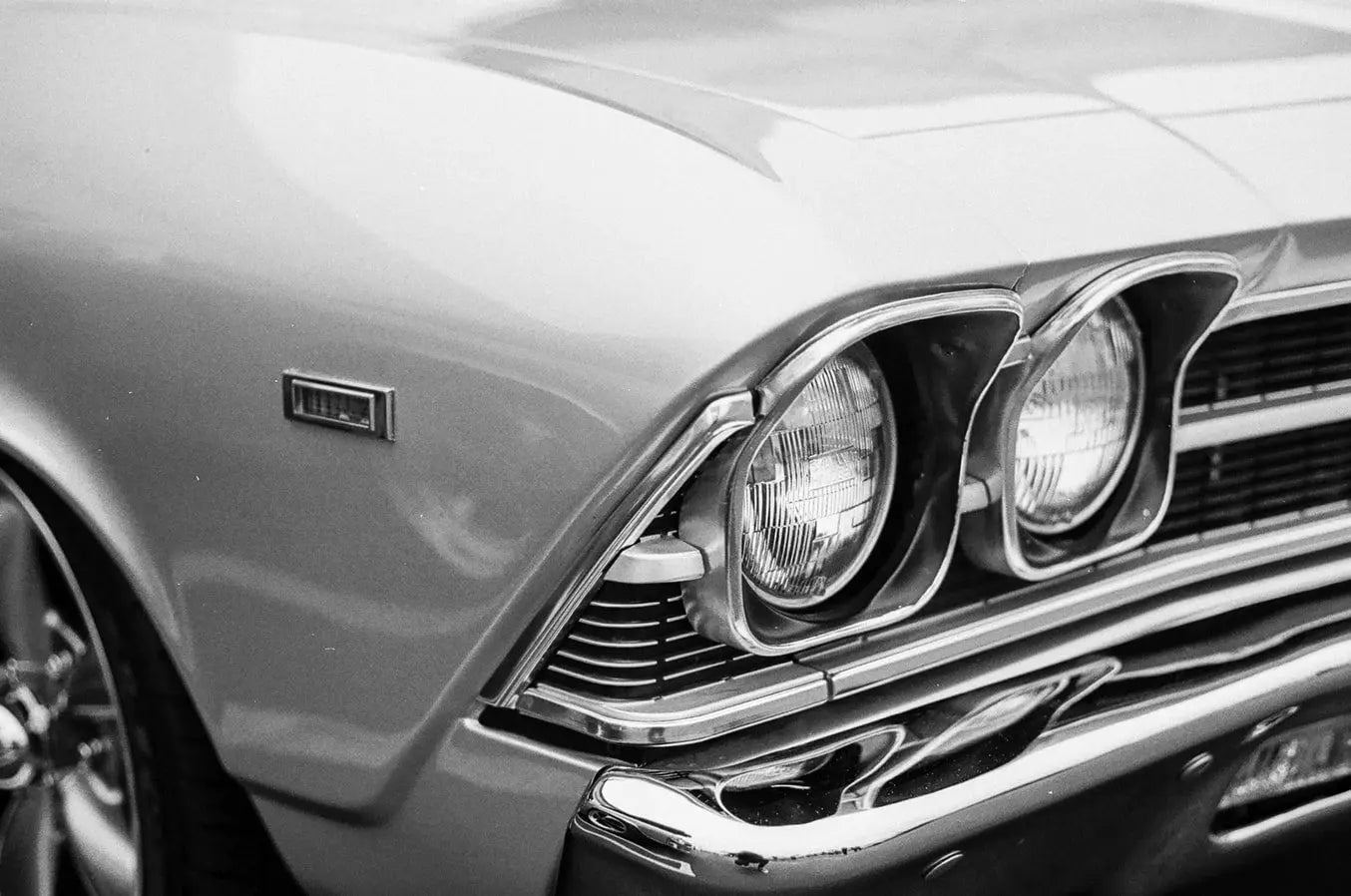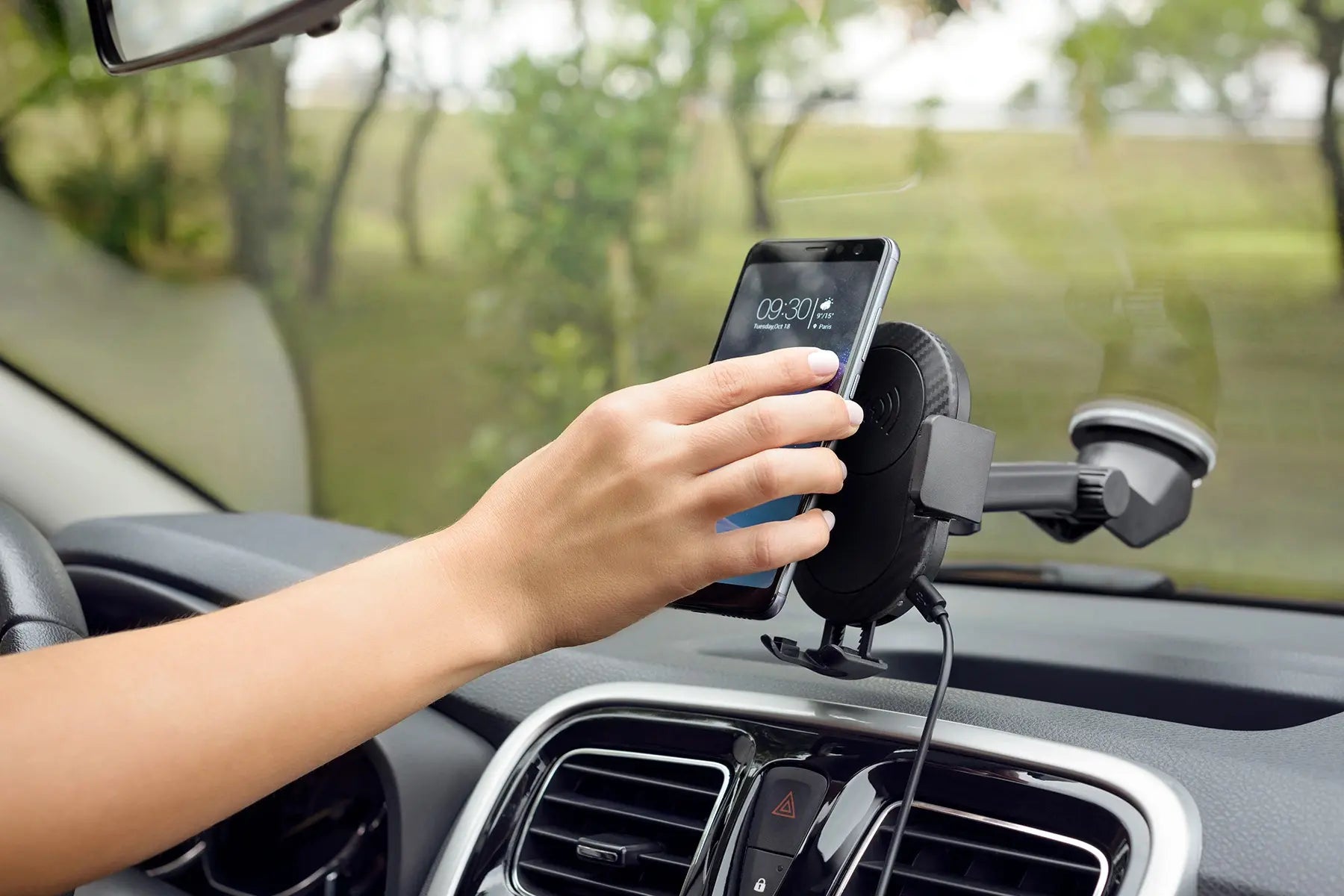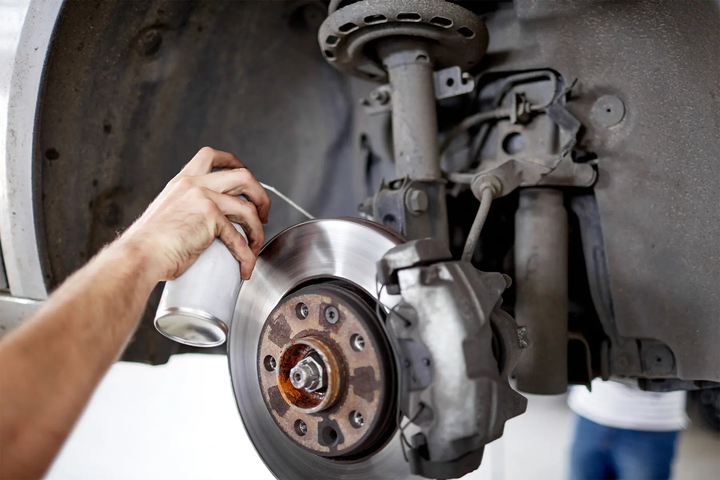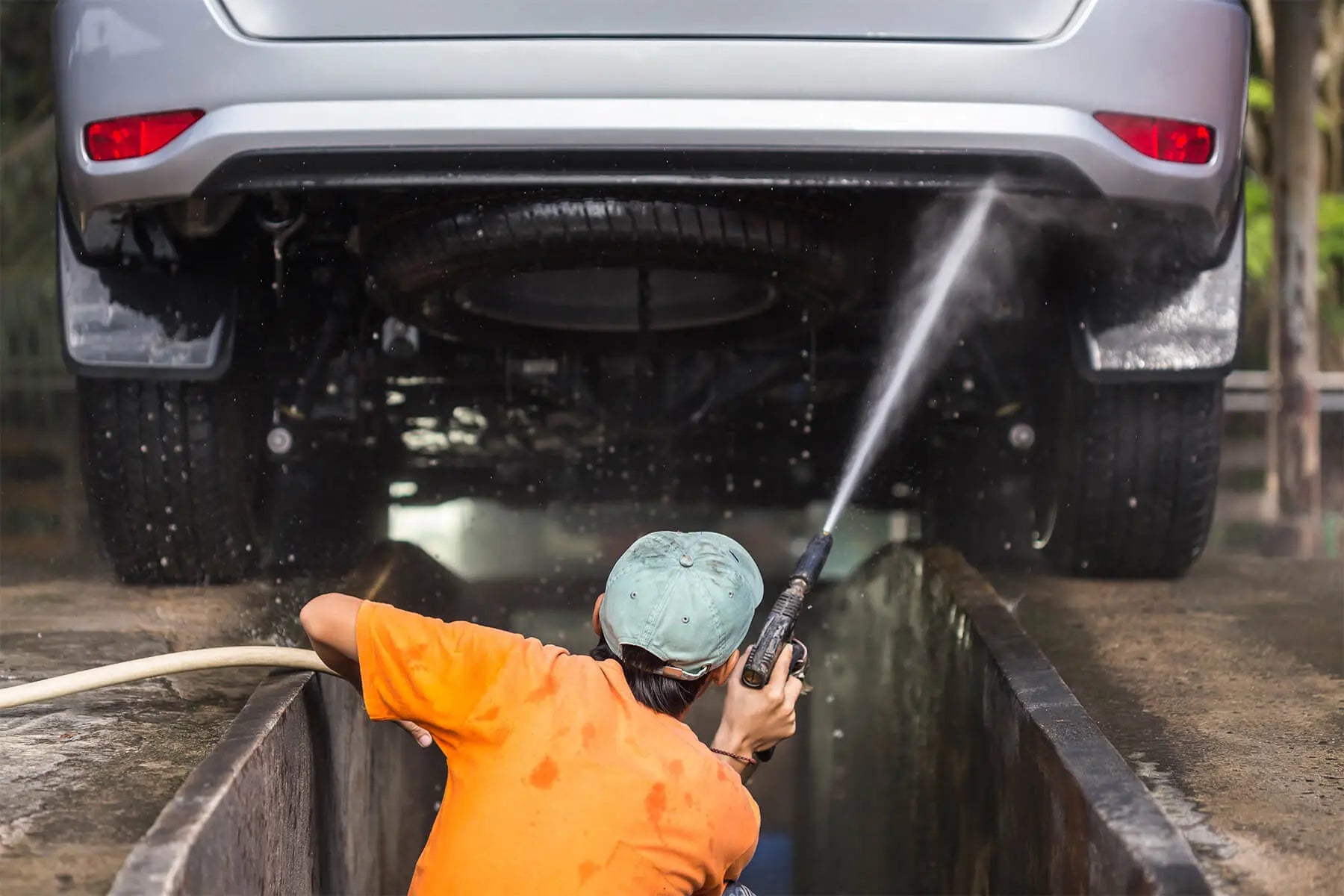

Most newer models of cars, trucks, and SUVs should be able to take on at least 100,000 miles without experiencing any major issues as long as they have been maintained and taken care of properly. Even though modern vehicles need much less service to run properly compared to the rides of several decades ago, there still are many components under the hood that are worth keeping an eye on to make sure they’re functioning at their best, which means better performance and a longer life in the long run.
Be good to your car and it’ll be good right back to you! With this complete car care guide, you will be able to stay miles ahead of the hijinx that keep less diligent car owners out of the driver's seat and in the waiting room of their local mechanic.
Protecting the Paint: Wax & Ceramic Coating
While waxing your car involves regular physical work, you can keep your car looking new with a solid coat of wax or ceramic coating. Plus, it preserves the paint by creating a barrier to keep out bird droppings, tree sap, salt, and unavoidable dirt and debris.
Here is what it takes to ensure maximum protection when you are waxing your car:
- Look for a car wax containing carnauba, this is the best wax out there for this!
- Don't apply too much wax--you always want to aim for a thin layer that waxes on, then waxes right off.
- Use a microfiber cloth for the waxing process to make sure there’s no residual fibers and that you don’t accidentally scratch your car with a cloth that’s too rough.
- Be a little generous on the hood and front bumper area of the vehicle--this is the area that gets the most wear and tear.
You can click here for our complete guide to how to wax your car--you’re welcome!
Engine Maintenance: Change Your Spark Plugs
With modern vehicles moving further and further into electronically controlled vehicles, the need for regular tune-ups for mechanical components is becoming less common. However, your spark plugs are one car part you can still do a tune-up for by changing them every 20,000 to 40,000 miles (32,000 to 64,000 km) to optimize engine performance, which keeps your fuel economy and overall fuel system happy and healthy. This translates to changing them about every 2 to 3 years for most drivers.
Changing your spark plug wires is helpful, too, though these last for significantly longer at about 60,000 to 100,000 miles, meaning you’ll probably only have to change them once or twice unless they’ve deteriorated.
Tire Maintenance: Rotate Your Tires
By rotating your tires, you are helping to more evenly distribute tire wear and tear to get more life out of them! In case you’re new to all of this, rotating tires means moving the tires to different positions on the car so that they wear more evenly. The rotation period and pattern should appear in your vehicle's manual, but to play it safe, rotate your tires about every 5,000 miles, which is easy to do if you rotate your tires every time you change your oil!
Engine Maintenance: Keep Up with Oil Changes
You can use the dipstick in your engine to check both the health of your oil and the levels of your oil. Wipe the dipstick onto a clean paper towel or shop rag when you pull it out--the clearer the fluid, the healthier your oil. If it’s black, you are overdue for an oil change! You can of course do this yourself or take it to a dealer or shop, but make sure to keep an eye out for specials that dealers often offer because sometimes these specials make it more cost effective to take the vehicle in versus buying the oil and filter and doing it yourself. Most vehicles should have oil changed about every 5,000 miles, but you can double check your manual for vehicle specifics.
It’s also important to maintain the required amount of oil in the engine, and make sure that the oil is the proper weight for your engine as well. On the dipstick, there’s lines that indicate the minimum and maximum levels of oil your engine should have--if you’re getting too close to the minimum line and you’re not quite due for a change just yet, you can top off the oil yourself. Just make sure you’re aware of your oil’s weight (5W-40, 10W-30, etc.).
Oil is crucial to your engine running efficiently and safely, and using a high-quality oil-boosting additive is also a great way to keep your oil performing at its best, and can even help improve your engine’s performance as a whole depending on the formula!
Engine System: Flush Your Coolant
Coolant, also known as antifreeze, is what keeps your engine’s temperature within a safe and optimal operating range. About every 30,000 miles (about 5 years for most drivers), it’s recommended to do a coolant flush since, for the most part, it’s the same coolant circulating in your engine system within that time period (versus burning off or being changed out like oil). Flushing your coolant will involve draining out all of the existing coolant, running distilled water through the system, and topping it off with new coolant--this guide is a good reference on how to do it!
Operating System: Keep an Eye Power Steering Fluid
Almost all modern vehicles have a power steering pump that remains lubricated by the application of power steering fluid. The pump’s reservoir has a screw-style cap that lifts off to enable you to check the fluid level. While this really only needs to be changed about every 100,000 miles or so, it’s an important part of the vehicle a lot of people take for granted. Without power steering, it’s up to you and your muscles to steer the car yourself, which is too heavy for most people to do.
Some signs that you are having power steering problems are squealing noises when you are trying to turn the steering wheel, or you will feel some stiff resistance when you are trying to steer. If this is the case, you may need to take your vehicle into a shop.
Engine Maintenance: Replace the Serpentine Belt
When you pop your hood and look at the engine, you’ll see there’s a big rubber belt connecting a bunch of cogs and pulleys together. This is the serpentine belt, and it’s critical to your engine being able to run properly because it connects a whole lot of moving parts and different systems necessary for your car to be able to run. When you hear a squealing or chirping noise coming from under the hood when you start your car, it’s a good sign your belt is about ready to retire. Usually, timing belts should be replaced between 60,000 to 100,000 miles, but replace them sooner if you hear slapping or squealing noises under the hood.
Transmission Maintenance: Changing the Fluid
Your vehicle's engine and the transmission are the two most complex parts to your vehicle, and two parts that you definitely don't want to have to pay the price to replace. Whether it’s an automatic or manual transmission, most manufacturers recommend changing the fluid every 30,000 to 60,000 miles. While this is definitely doable yourself, the process can differ between makes and models, so make sure to either do your research or just drop it off at the shop.
Taking the time to make sure your transmission fluid is clear and clean will extend the life of your transmission, saving you thousands of dollars in potential repairs down the road.
Engine Maintenance:
Make sure that your engine’s air filter is clean. One of the main parts to the way an engine works is compressing air and fuel for combustion, so if you’re not pushing clean air into the system, your engine won’t be happy.
Luckily, this is an easy, inexpensive thing to do, but you do need to do it about once a year.
Car Battery Maintenance
While you generally don’t want to do much to mess with the battery, keeping it clean, doing a visual inspection, and being mindful of how old it is will ensure you don’t get stuck in a random parking lot somewhere because your battery died.
- Clean the battery posts and terminals. You only need to do this if you see corrosion or any other type of gunk on the posts--it usually will look like a crusted or powdery white or blue, and it also usually means you need a new battery soon. Remove the negative cable (black or minus sign) first, then remove the positive red cable to disconnect the battery from the vehicle. Anytime you work on the vehicle with the hood open, this is generally one of the first steps you’ll always take. Take a wire battery brush dipped in a paste made from a little bit of water and a couple tablespoons of baking soda, and clean the battery terminal posts and terminals. IMPORTANT: Be cautious to not soak the top of the battery, touch both posts at once, do anything to connect the posts, or touch the terminals back onto the posts, or you’ll be in for quite the shock. Seriously.
- Reinstall the battery cables. You can choose to coat the posts and clamps with a thin coating of dielectric grease to protect from corrosion, though this isn’t necessary. Make sure you put the positive cable on first, and be cautious as you reattach the negative cable.
Brake Maintenance: Change Your Brakes
When you are checking fluids, don't forget to check the brake fluid level. Make sure that your vehicle is on a level surface first, then unscrew the reservoir cap. The brake fluid level should be somewhere in the middle of the minimum and maximum marks in the fluid reservoir. If it’s low, keep in mind that your brake pads likely need changed!
For disc brakes, it’s generally easy to change the brake pads if you’re mechanically inclined, otherwise you can take your car to a shop for a bit more cash than it would take to do it yourself. From drum brakes, the process is a little more intensive, so most people just take their vehicles into a shop to have this done. Either way, the absolute average to change brakes is every 50,000 miles, but if you’re hearing squeaking when you go to stop, or if you find you really have to push your foot down, chances are it’s time for a change.
While it may seem like a lot of work, it’ll be worth all your efforts when your car lasts past 100,000, or even 200,000 miles without having issues, so get to wrenching!
SOURCES:
https://www.consumerreports.org/car-repair-maintenance/tips-on-how-to-maintain-your-new-car/
https://www.rd.com/list/car-maintenance-tips-extend-life-car/





